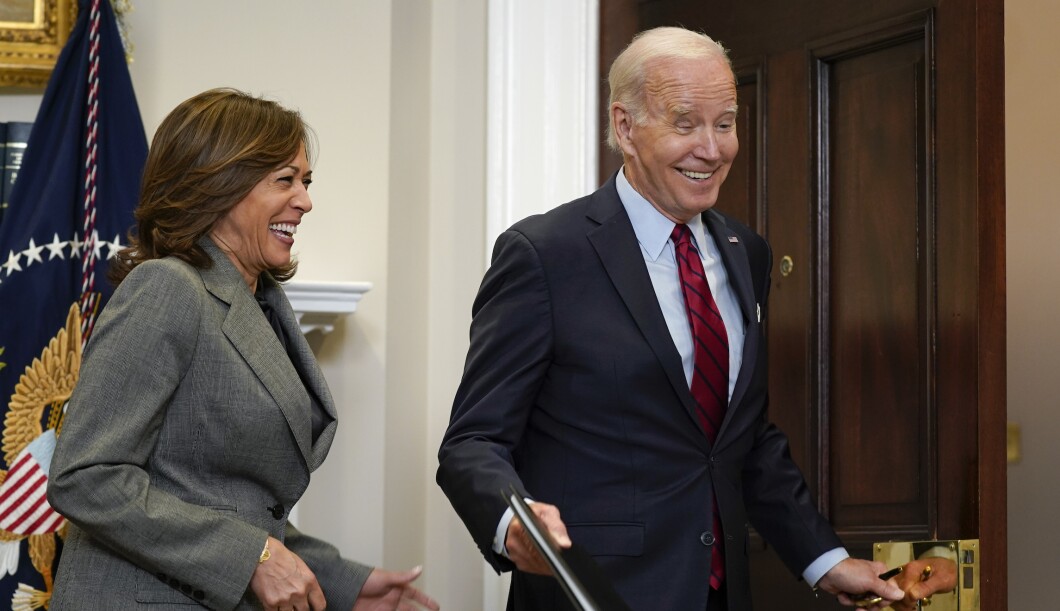
The chaos over choosing a Republican speaker of the House could provide a boost to President Joe Biden as he launches his 2023 agenda and looks ahead to 2024.
GOPers hold a bare majority with 222 seats in the lower chamber, meaning 98.2% of the party’s representatives have to back the same speaker candidate in order to reach the 218-vote threshold. That hasn’t happened through three days of voting, which is likely to be a plus for Biden.
BOWSER BATTLE WITH BIDEN OVER TELEWORK LATEST IN ON-AGAIN OFF-AGAIN PANDEMIC
“This basically reinforces Joe Biden’s argument: I’m a centrist trying to move this country forward, while Republicans are so divided ideologically that they can’t pick their own leader,” said Democratic strategist Brad Bannon. “This will be a big argument Biden will make in his reelection campaign.”
It could help Biden in the near term as well. With Democrats holding 213 House seats, the party will need just five Republicans to join in order to pass bills in the House. If Republicans are not united, that may become easier to do.
Biden said earlier this week that the spectacle preventing Rep. Kevin McCarthy (R-CA) from obtaining the title was “embarrassing” but “not my problem.” Asked again at the White House on Thursday, he began, “I’m following with great,” then paused, smiled, and turned to Vice President Kamala Harris.
Harris added, “Attention,” and then both exited the room laughing.

The president has gotten 2023 started quickly, boasting about new bridges along with Senate Minority Leader Mitch McConnell (R-KY) in Kentucky and planning a visit to the southern border, which Republicans have been calling on him to do for years.
But the split-screen spectacle may not have a lasting impact, argues American Enterprise Institute senior fellow Kevin Kosar.
“Democrats are having fun with this. They’re reaping the benefit of being able to say the GOP is hapless and can’t run the House,” Kosar said. “I’m not sure how much of a long-term value that will provide to Democrats.”
The Republican food fight is more indicative of the tight margins the House has seen in recent cycles, he argues. In 2019, Rep. Nancy Pelosi (D-CA) had to cut deals in order to secure the speaker position with her holding 222 seats, the same number the GOP holds now.
“The narrower the majorities are, the more members are emboldened to demand stuff,” Kosar said. “Pelosi dealt with progressives making demands and feuding with her. They were sort of like the Freedom Caucus is now.”
That disarray didn’t stop Democrats from taking back the White House and full control of Congress in 2020.
Biden is likely to try using House Republicans as a foil over the next two years, blaming them for failing to advance his agenda and for the problems he claims that agenda would solve.
The president used a similar strategy in the midterm elections, keeping the focus off himself and his low approval ratings and on the GOP. That strategy was largely successful, which is evidenced by the razor-thin margins Republicans now face in the House and potentially by the rebellion against McCarthy.
The congressional holdup is also preventing the party from pursuing the investigations it long championed on the campaign trail, including over Hunter Biden‘s business dealings, the origins of COVID-19, and social media censorship.
As to whether or not voters will still care about the speaker saga during next year’s presidential elections, Bannon, the Democratic strategist, said they might, especially if the GOP stalemate is a sign of things to come.
CLICK HERE TO READ MORE FROM THE WASHINGTON EXAMINER
“First impressions count,” said Bannon. “And I don’t think it’s going to get any better from here on.”





